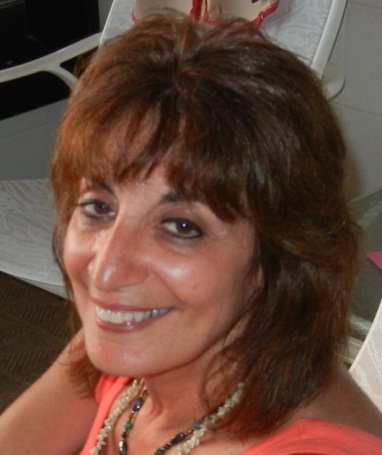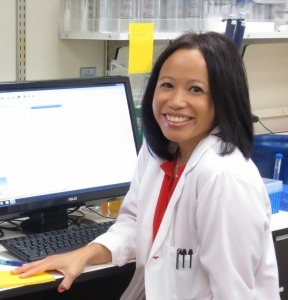
SRL Best Practices Series
-
Register
- Visitor - $50
- Bronze - Free!
- Silver - Free!
- Gold - Free!
- Platinum - Free!
- Community Administrator - Free!
- ISAC Staff - Free!
- Bronze Lab Membership - Free!
- Silver Lab Membership - Free!
- Platinum Lab Membership - Free!
Part 1: Managing Data in a Flow Cytometry Core
Part 2: Standard Operating Procedures
Part 3: Training and Education
Part 4: Laboratory Safety
Part 5: Quality Control / Quality Assurance
Part 6: Operations
Part 7: Staffing
-
Contains 4 Component(s), Includes Credits Recorded On: 08/30/2017
A CYTO U Webinar presented by Matthew Cochran & Rob Salomon Keywords: organization structure, organization goals, skill set, recruitment, retention, SMART goal
About the Presenters

Matt Cochran
Technical Director
URMC Flow Cytometry SRLMatt Cochran is the technical director of the University of Rochester School of Medicine and Dentistry (URMC) Flow Cytometry SRL. The lab contains eight traditional analytical flow cytometers, two cell sorters, an Image Stream X imaging cytometer, and a CyTOF mass cytometer. It serves the upstate NY region from Buffalo to Ithaca. Matt began his career in flow cytometry in 2004 at the Rochester Human Immunology Core Lab, where he managed an 8-color LSRII.. He has experience with many traditional and non-traditional cytometers and a wide variety of applications, including large-scale immunophenotyping and panel design. In addition to the Rochester cytometry training program, which he’s been running for around eight years, he’s been teaching and consulting nationally for a number of years. Matt is also a member of the ISAC Shared Resource Laboratory Task Force, the ABRF flow cytometry research group, and the GLIIFCA steering committee.

Rob Salomon
Technical Director
Garvan-Weizmann Centre for Cellular GenomicsRob Salomon is the inaugural technical director of the Garvan-Weizmann Centre for Cellular Genomics. Rob has a background in biology and engineering and is interested in leveraging cutting-edge technology to answer important biological questions. In 2014, he was named a SRL Emerging Leader by ISAC. Since then, Mr. Salomon has played a major role in both the Australian and International Cytometry Societies.
CMLE Credit: 1.0
-
Contains 4 Component(s), Includes Credits Recorded On: 07/21/2017
A CYTO U Webinar presented by Joanne Lannigan, MS & James Marvin Keywords: Director, oversight committee, advisory board, performance assesment, business plan, annual reports, budget, policies, procedures, communication
About the Presenters

Joanne Lannigan, MS
Director of the Flow Cytometry Core Facility
School of Medicine at the University of VirginiaJoanne Lannigan was an early adopter of Imaging Flow Cytometry (IFC). Having received the fifth commercially produced IS100 instrument in 2005, she has worked with many investigators to develop numerous protocols and applications for this technology. Her work, and the work of her colleagues, has appeared in many different journals, including journal front covers, and has also been published in Current Protocols in Cytometry. Her lab has continued to upgrade IFC instrumentation over the years and currently uses a four laser, multi-magnification two camera, Imagestream MKII system to explore ways to utilize this technology to answer scientific questions not well served by conventional flow cytometry or traditional fluorescence microscopy. Her most recent interests involve the use of IFC for the analysis of submicron particles (extracellular vesicles, viruses, and other nanoparticles).

James Marvin
Director
Flow Cytometry Core Facility
University of Utah
James Marvin has spent virtually his entire career within a flow cytometry shared resource setting. In 2001 James joined the bustling flow lab at the University of Chicago under the tutelage of Julie Auger and Ryan Duggan. This was the era in which cell sorters were a bit more “hands on,” and a firm understanding of the underlying hardware was essential on a daily basis. Next, James moved on to Northwestern University to “pick the brain” of Dr. Charles Goolsby. In addition to the routine aspects involved in a flow core, a transition to more clinical assays was pursued during this time. Through a strong collaboration with industry as well as academic partners, significant strides were made in optimizing assays related to signal transduction analysis in normal as well as diseased bone marrow. Finally, in 2011, James uprooted from the Midwest in search of the mountains and desert of Utah where he has been the Director of the Flow Lab at the University of Utah in Salt Lake City. One of the many unifying themes through each of these distinct labs was the emphasis that education and training played for both facility staff and clients.Webinar Summary
One of the most important aspects of a well-run SRL is the operational structure of the facility. A properly managed SRL requires best practices that provide necessary oversight, strategic and fiscal management and planning, self-assessments, and external reviews for evaluating the facility’s performance. This webinar will discuss the infrastructure necessary to insure the efficient and effective operation of the SRL.
Learning Objectives
Upon completion of this webinar, you will have a greater understanding of the important operational components that need to be addressed as part of overall Best Practices of a SRL. These areas include: management, oversight, performance assessment, annual reports/business plans, budget development and review, facility use policy and procedures, and communications.
CMLE Credit: 1.0
-
Contains 3 Component(s), Includes Credits Recorded On: 06/28/2017
A CYTO U Webinar presented by Lora Barsky & Rui Gardner, PhD Keywords: SRL Best Practices Series, Part 5: Quality Control / Quality Assurance
About the Presenters

Lora Barsky
USC Flow Cytometry Core
Rui Gardner, PhD
Head of Flow Cytometry Core Facility
Memorial Sloan Kettering Cancer CenterWebinar Summary
The importance of quality control and quality assurance within the SRL is critical to the overall function of such facilities. Working in a “shared” environment in which a large variety of biological samples are introduced, requires a reasonable set of “best practices” to ensure the quality standards required of a successfully run shared facility.
CMLE Credit: 1.0
-
Contains 4 Component(s), Includes Credits Recorded On: 05/30/2017
A CYTO U Webinar presented by Joanne Lannigan, MS Keywords: Lab Safety, Biosafety, Operations, Training, Risk Assessment, Exposure plan, Physical environment
About the Presenter

Joanne Lannigan, MS
Director of the Flow Cytometry Core Facility
School of Medicine at the University of VirginiaJoanne Lannigan was an early adopter of Imaging Flow Cytometry (IFC). Having received the fifth commercially produced IS100 instrument in 2005, she has worked with many investigators to develop numerous protocols and applications for this technology. Her work, and the work of her colleagues, has appeared in many different journals, including journal front covers, and has also been published in Current Protocols in Cytometry. Her lab has continued to upgrade IFC instrumentation over the years and currently uses a four laser, multi-magnification two camera, Imagestream MKII system to explore ways to utilize this technology to answer scientific questions not well served by conventional flow cytometry or traditional fluorescence microscopy. Her most recent interests involve the use of IFC for the analysis of submicron particles (extracellular vesicles, viruses, and other nanoparticles).
Webinar Summary
The importance of adequate safety practices within an SRL is critical to the overall function of such facilities. Working in a “shared” environment, in which a large variety of biological samples are introduced, requires a reasonable set of “best practices” to ensure the safety of everyone who accesses the shared facility. The best practices presented here represent what should be minimally present to provide a safe working environment.
Learning Objectives
- Describe the minimal practices for insuring a safe laboratory environment in a shared resource core lab.
- Assess the potential biosafety risks in an SRL or core lab.
- Develop a plan to minimize the exposure of staff and users to potential hazards.
- Consider the factors of the lab physical environment which are consistent with a safe work place.
- Recognize the importance of administrative factors in the assurance of a safe work environment.
Who Should Attend
Directors, managers, and staff of shared resource or core facilities.
CMLE Credit: 1.0
-
Contains 4 Component(s), Includes Credits Recorded On: 04/12/2017
A CYTO U Webinar presented by Michele Black & James Marvin Keywords: training guideline, training checklist, "reproducible" training, training topics
About the Presenters

Michele Black
Technical Director
Cell Analysis Facility
University of WashingtonMichele Black has been working in the field of cytometry for 20 years. She work at the Fred Hutchinson Cancer Research Center's Flow Lab as the senior flow cytometry specialist from 1996 to 2013. For the past fourteen years, Michele has been the technical director of the Cell Analysis Facility at the University of Washington. She has been an active member of ISAC since 1996 and has served on both the Shared Resource Laboratory Task Force and the SRL Services Committee. She is committed to providing quality flow cytometry services and education to researchers while increasing access to advanced technologies. She supports research activities while maintaining a fiscally-sound core that consistently provides affordable, high-quality service.

James Marvin
Director Flow Cytometry Core Facility
University of UtahJames Marvin has spent virtually his entire career within a flow cytometry shared resource setting. In 2001 James joined the bustling flow lab at the University of Chicago under the tutelage of Julie Auger and Ryan Duggan. This was the era in which cell sorters were a bit more “hands on,” and a firm understanding of the underlying hardware was essential on a daily basis. Next, James moved on to Northwestern University to “pick the brain” of Dr. Charles Goolsby. In addition to the routine aspects involved in a flow core, a transition to more clinical assays was pursued during this time. Through a strong collaboration with industry as well as academic partners, significant strides were made in optimizing assays related to signal transduction analysis in normal as well as diseased bone marrow. Finally, in 2011, James uprooted from the Midwest in search of the mountains and desert of Utah where he has been the Director of the Flow Lab at the University of Utah in Salt Lake City. One of the many unifying themes through each of these distinct labs was the emphasis that education and training played for both facility staff and clients.
Webinar Summary
Education and training are essential parts of a SRL and cover a wide range of topics. As cytometry SRLs are likely to be centered on technology and instrumentation, education within the lab should strongly focus on both the theoretical workings of the instrumentation as well as the specific details of running and acquiring samples for both staff and the end user. This training and education webinar aims to provide specialized guidance for best practices at SRL facilities across the globe and is the third of seven in our SRL Best Practices series. This series is not intended to specifically define how to implement these recommendations but rather to help establish a set of goals for an SRL to reach its desired level of excellence.
Learning Objectives
A well balanced and thorough training and educational curricula within an SRL will touch on a very broad range of topics. The presenters will outline what should be addressed when developing an education program, such as:
- Instrumentation
- Experiment Design
- Reagents
- Lab Safety
- Facility Policies
- Data Analysis
Creating an education and training program within an SRL will promote a consistent approach to introducing new staff and end users to a lab,and ensure that everyone has the appropriate knowledge to successfully utilize the instrumentation in the lab.
Who Should Attend
The intended audience for the discussion is staff of all levels associated with a flow cytometry core facility.
CMLE Credit: 1.0
-
Contains 4 Component(s), Includes Credits Recorded On: 03/28/2017
A CYTO U Webinar presented by Carina Torres & Benjamin J. Daniel, PhD Keywords: SOP, SOP format, SOP categories, policies
About the Presenters

Carina Torres
Manager
Flow Cytometry Core
Eli LillyCarina Torres has spent the past 18 years as a shared resource professional in both academic and industry environments. Her current role as manager of the flow cytometry core at Eli Lilly in San Diego involves developing, implementing, and optimizing cytometry technologies to assist in antibody discovery and engineering platforms. She is co-founder of the San Diego Society for Cytometry and serves as a member of ISAC's SRL Task Force.

Benjamin Daniel, PhD
Director
Flow Cytometry Shared Resource
UT HealthDr. Benjamin Daniel has been the director of the Flow Cytometry Shared Resource at the UT Health, San Antonio for the past seven years. Prior to this, he studied how aging affects the immune responses to cancer. He has been on the program committee for the past several CYTO conferences, along with the Shared Resource Laboratory Taskforce. He also currently serves as the vice president for FlowTex, a Texas-based flow cytometry user group.
Webinar Summary
As the second of seven in the SRL Best Practices series, this live webinar will give the audience an overview of the importance of standard operating procedures (SOPs) and why they are important for all day-to-day activities. Several examples of SOPs will be discussed.
Learning Objectives
By the end of this webinar, viewers should understand the importance of SOPs, which ones are most important, and have general guidelines on how to author them.
Who Should Attend
SRL leaders and staff who want to learn more about the importance of SOPs.
CMLE Credit: 1.0
-
Contains 4 Component(s), Includes Credits Recorded On: 03/16/2017
A CYTO U Webinar presented by Monica DeLay & Rachael Walker, PhD Keywords: Data collection, MIFloCyt, data documentation, quality assurance, FCS Data Repository, Data preservation, Computer maintenance
About the Presenters

Monica DeLay
Manager
Flow Cytometry Core
Cincinnati Children's HospitalAfter receiving an MS in biology, Monica DeLay performed research for over a decade in the area of autoimmune diseases, focusing on the structure and function of human major histocompatibility complex (MHC) and its role in modulating disease. In 2008 she began managing the Research Flow Cytometry Core at Cincinnati Children’s Hospital in Cincinnati, Ohio. Over the last nine years, she has helped facilitate the growth of the core in instrumentation, infrastructure, staff, and clientele. She is co-founder and president of the Ohio River Valley Cytometry Association, an organization connecting advancements in cytometry technology to local scientists. She is the former chair of the ISAC SRL Services Committee and former co-chair of the SRL Emerging Leaders Committee. She is a member and past co-chair of the ABRF Flow Cytometry Research Group whose mission is to understand alterations in cell function and develop best practices associated with cell sorting. She is a member of the organizing committee for the Core Managers Workshop for the Great Lakes International Imaging and Flow Cytometry Association (GLIIFCA), and she has served as a Council member for ISAC.

Rachael Walker, PhD
Head of Flow Cytometry
Babraham InstituteDr. Rachael Walker is the head of flow cytometry at Babraham Institute, Cambridge, UK. Rachael has over eleven years of experience with managing flow cytometry core facilities within Cambridge and has been in her current position since 2012. She has a PhD in tissue engineering from the University of Liverpool, where she first learned to use a sorter. In 2012, Rachael was awarded an ISAC Scholarship and transferred to the new SRL Emerging Leaders program in 2014. She is chair of the Mid-Anglia Cytometry Club, secretary of flowcytometryUK, and one of the main organizers of the Pre-CYTO ISAC Live Education Delivery Task Force.
Webinar Summary
This is the first of seven live webinars to focus on the SRL Best Practices series. This webinar will give an overview of the important aspects in managing data in a shared resource lab and provide examples of common practices used among some of the best SRLs from around the world.
Learning Objectives
At the completion of this webinar, attendees will understand key aspects when managing data in a flow cytometry core facility including standards for data collection and documentation, quality assurance, data preservation, and computer maintenance.
Who Should Attend
SRL staff, managers, or directors wanting to learn about or improve on data management methods.
CMLE Credit: 1.0

